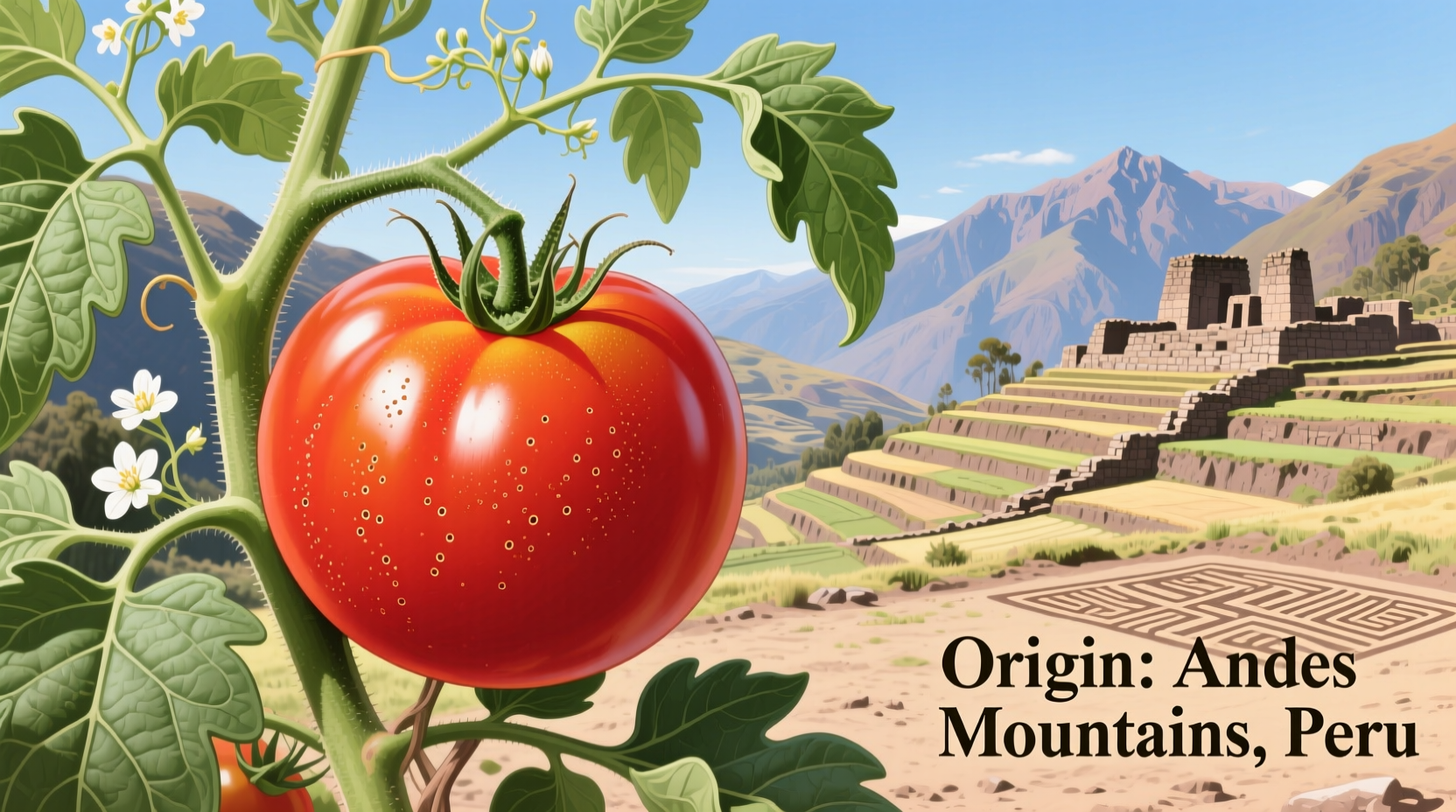Tomatoes originated in western South America, specifically in the Andean regions of modern-day Peru, Ecuador, and Bolivia. Scientific evidence shows wild tomato varieties grew naturally in these areas over 2,000 years ago before being domesticated by indigenous peoples in Mesoamerica (present-day Mexico) around 500 BC. This South American origin explains why tomatoes belong to the nightshade family (Solanaceae) and share genetic traits with other New World plants.
For centuries, the true origin of tomatoes remained shrouded in mystery as they spread across continents. Today, genetic research confirms their journey from humble Andean beginnings to becoming a global culinary staple. Understanding where tomatoes originally come from reveals fascinating connections between ancient civilizations, botanical evolution, and modern food culture.
The Ancient South American Roots
Archaeological evidence from Peru's coastal valleys shows wild tomato varieties (Solanum pimpinellifolium) growing naturally in the region as early as the first millennium BC. These small, berry-like fruits differed significantly from today's cultivated tomatoes. The Instituto Nacional de Cultura in Peru has documented ancient pottery fragments with tomato residue dating back to 800 BC, providing physical proof of early consumption.
| Tomato Evolution Stage | Time Period | Key Characteristics | Geographic Origin |
|---|---|---|---|
| Wild Ancestor | Pre-500 BC | Small berry-like fruits (0.5-1 cm), high acidity | Andes Mountains (Peru, Ecuador, Bolivia) |
| Early Domestication | 500 BC - 1500 AD | Larger fruits (2-4 cm), reduced acidity | Mesoamerica (Mexico) |
| European Adaptation | 1500-1800 AD | Further size increase, color variation | Mediterranean Europe |
| Modern Cultivars | 1800-Present | Wide size/color range, disease resistance | Global cultivation |
From Andes to Aztecs: The Domestication Journey
While wild tomatoes grew naturally in South America, the critical step of domestication occurred further north. Indigenous peoples in Mesoamerica selectively bred these plants, creating larger, less acidic varieties. The Nahua people called them tomatl, which evolved into our modern word "tomato." Spanish conquistadors documented Aztec cultivation of tomatoes in the 16th century, noting their use in sauces and stews.
Genetic studies published in Nature Genetics confirm that all modern cultivated tomatoes descend from a single domestication event in western Mexico. Researchers at the Boyce Thompson Institute analyzed 360 tomato varieties and found consistent genetic markers pointing to this Mesoamerican origin point, settling long-standing debates about multiple domestication theories.

European Misconceptions and Eventual Adoption
When Spanish explorers brought tomatoes to Europe in the 1520s, they faced widespread suspicion. Many Europeans believed tomatoes were poisonous due to their membership in the nightshade family. Italian botanist Pietro Andrea Mattioli's 1544 description of tomatoes as "golden apples" helped popularize them in Mediterranean regions, but northern Europeans remained wary for centuries.
The USDA Agricultural Research Service documents how tomatoes gradually gained acceptance through three key phases:
- Ornamental phase (1520s-1600s): Grown as decorative plants in European gardens
- Medicinal phase (1600s-1700s): Used in folk remedies despite safety concerns
- Culinary phase (1700s-present): Full integration into European cuisine
Global Spread and Modern Cultivation
Tomatoes reached Asia through Spanish trade routes by the 16th century, appearing in records from the Philippines and India. Their journey to North America came later - Thomas Jefferson grew them at Monticello in the late 18th century, though they didn't become common in American gardens until the 19th century.
Today, China leads global tomato production with over 60 million metric tons annually, followed by India and Turkey. The Food and Agriculture Organization (FAO) reports that modern cultivation spans 180 countries, with greenhouse production now accounting for 25% of global supply. Despite this worldwide presence, heirloom varieties preserving ancient genetic traits remain popular among specialty growers.
Practical Implications for Modern Cooks
Understanding tomato origins helps explain flavor variations you experience:
- Climate adaptation: Tomatoes originating from South America thrive in warm conditions but suffer below 55°F (13°C)
- Flavor chemistry: Andean varieties developed higher sugar content to attract native pollinators
- Culinary applications: Traditional Mexican cooking uses tomatoes differently than Italian cuisine due to historical usage patterns
When selecting tomatoes, consider their heritage. Heirloom varieties like 'Andean Purple' or 'Mexican Midget' offer taste profiles closer to ancient tomatoes, while modern hybrids prioritize shelf life over complex flavors. For the most authentic experience, seek out locally grown tomatoes during peak season - their flavor reflects both genetic heritage and optimal growing conditions.
Preserving Tomato Heritage
Organizations like the Seed Savers Exchange and Slow Food Foundation work to preserve ancient tomato varieties. Their efforts protect genetic diversity that could prove crucial for developing disease-resistant strains. Home gardeners can contribute by growing heirloom varieties and saving seeds properly. The University of California's Agriculture and Natural Resources department provides detailed guides on preserving tomato seed viability for future generations.











 浙公网安备
33010002000092号
浙公网安备
33010002000092号 浙B2-20120091-4
浙B2-20120091-4